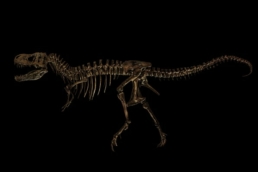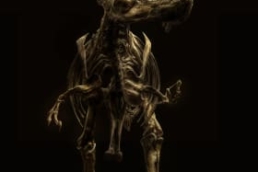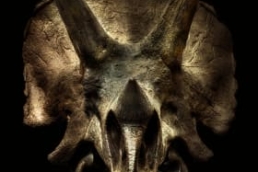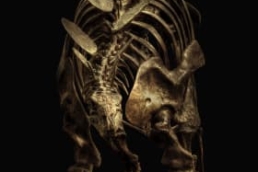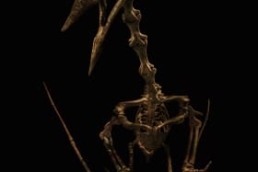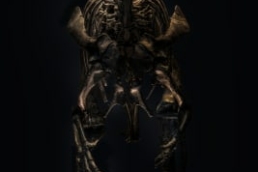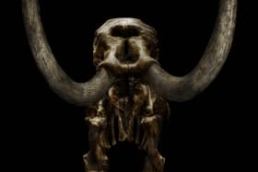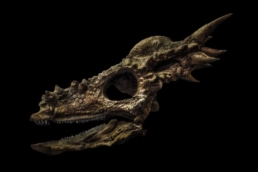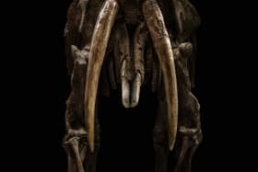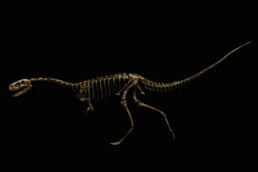German photographer Christian Voigt turns dinosaur skeletons into stunning artworks -- without ever touching a bone.
The fossils in his “Evolution” series are shown in complete isolation, making them look almost alive and giving the impression of highly staged studio photographs.
But that couldn’t be farther from the truth. The shots are, in fact, taken in museums and without ever moving the precious specimens.
“I cannot move the skeletons, of course, so I have to work within the existing situations. And I don’t use any (additional artificial) lights, just available light. Museums don’t like it when you start to lay down cables and tripods that can fall; they want minimum risk,” Voigt said in a phone interview.
The only tool of his trade? A black drape. “Sometimes I can work with a very large black cloth that I put either behind the skeletons or behind myself, if the animals are under glass, to avoid reflections. The setup takes a long time, usually up to two hours for each photo.”

'Take them out'
Voigt first imagined the series after walking through London’s Natural History Museum and taking a photo of the magnificent blue whale skeleton that hangs in its entrance hall.
“Museums are always packed with skeletons. They have up to 20 in a single room — sometimes that’s overwhelming. My idea was to take them out, to give them space, and put them in the right position and the right light,” he said.
He shoots using a mix of old and new techniques. The camera is analog, but it transfers the image to a digital file to take advantage of the high resolution. The post-production work mostly involves digitally removing everything that isn’t the skeleton.
It wasn’t easy, at the beginning, to convince museums to let him work inside them — even on days they were closed to the public. But once he could show the initial pictures, doors started opening (usually for a fee, to pay for the extra hours and security). His main criteria for selecting which skeletons to photograph is that they must be authentic and complete. Because he cannot move them, it’s sometimes tricky to fit them into the frame, which makes positioning the camera the most difficult part of the shoot, although he can gain an advantage by using wide-angle lenses. Voigt says that although the subject is hardly new, nobody had photographed dinosaur fossils this way before.
“There is not too much manipulation on the structure itself. I play a little bit with lighting to give them a similar, smooth look, but the color range is more or less the original one for most, if not all of them,” he said.
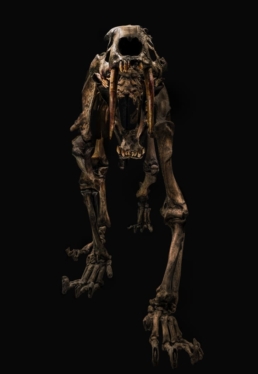
In recent years, actual dinosaur fossils have been selling for record prices. In 2018, a near-complete, 30-foot long T-Rex skeleton from Wyoming sold at auction for $2.4 million, and earlier this year, a fossil hunter listed a T-Rex skeleton on eBay for close to $3 million. (It hasn’t sold yet.) A number of scientists have decried the sales, saying that such specimens belong in museums where the public can appreciate them.
Voigt hopes his photographs bring the fossils the right kind of attention. “I named the series ‘Evolution’ because these were really living animals, not a Hollywood production or a ‘Game of Thrones’ prop,” he said.
“We still don’t know too much about them, yet when you go into the subject deeper and deeper, it just gets more and more amazing.”
Top image: a Tyrannosaurus Rex skull from the Museum für Naturkunde, Berlin.

